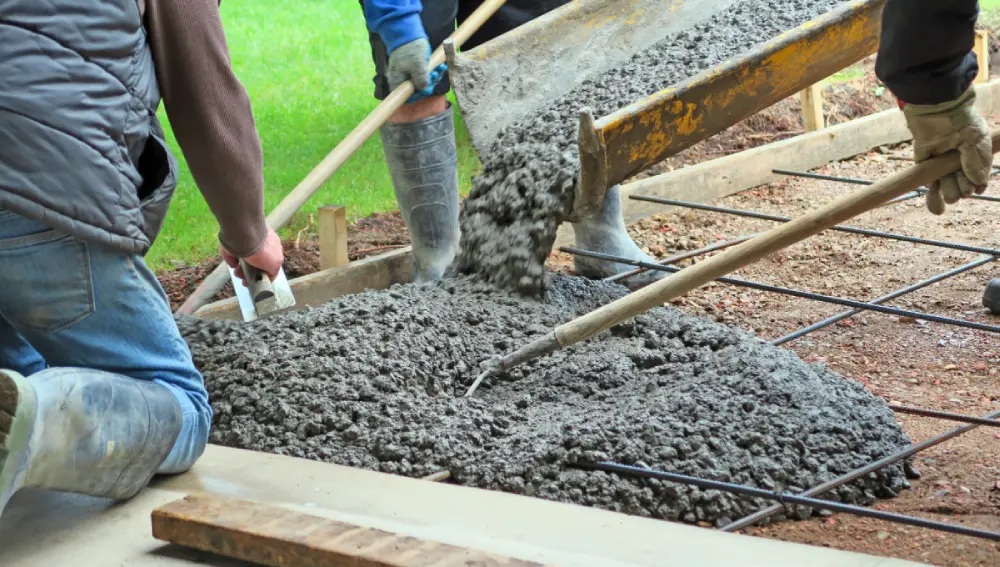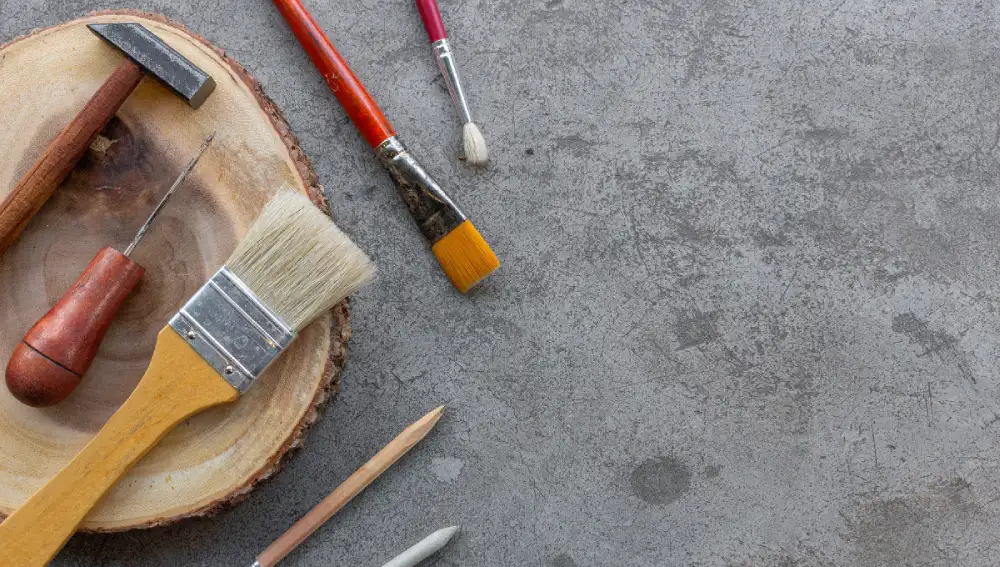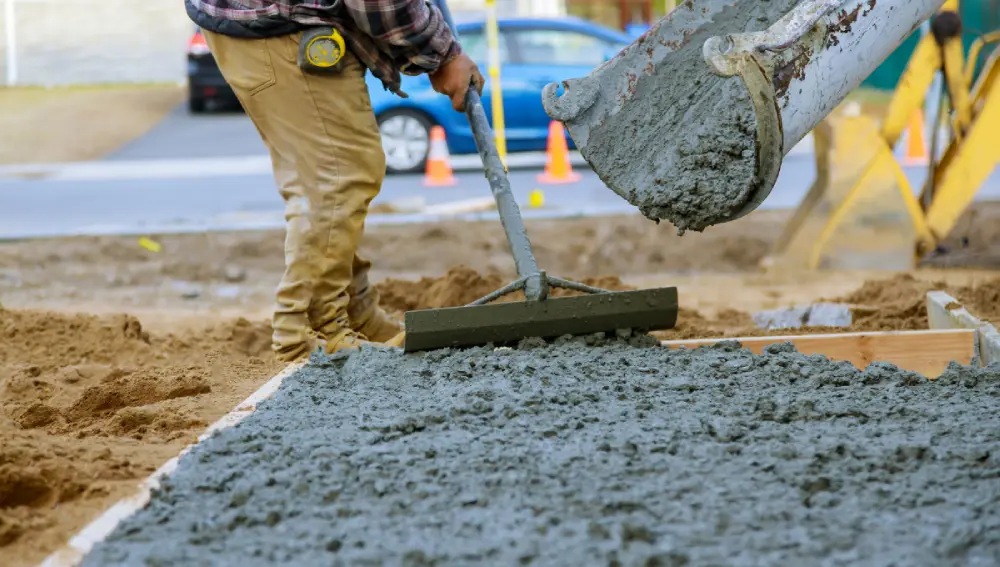Starting with a new material or technique in construction might be frightening, but don’t worry! This blog examines quick-setting cement, a useful tool in construction settings that move quickly. This page contains all the knowledge you need to understand quick-setting concrete. Let’s get started!
- 1 What is Quick Setting Cement?
- 2 Manufacture of Quick-Setting Cement
- 3 Components of Quick Setting Cement
- 4 Quick Setting Cement Properties & Uses
- 5 How to Use Quick Setting Cement
- 6 Features of Quick Setting Cement
- 7 Quick Setting Cement Vs. Rapid Hardening Cement Vs. Ordinary Portland Cement
- 8 Conclusion
- 9 Frequently Asked Questions (FAQs)
What is Quick Setting Cement?
A special type of Portland cement, known as quick-setting cement, or fast-setting cement or rapid-setting cement is prepared for construction works where short periods of setting times are required. It possesses high strength, rapid setting, and very low drying shrinkage. It hardens after mixing with water and becomes a stone in 30 minutes.
Manufacture of Quick-Setting Cement

The preparation of quick-setting cement requires a definite technique that is followed to achieve the fast setting characteristics of the product.
Here’s an overview:
- Raw Material Preparation: The main input materials – limestone, clay and shale are extracted from the ground in the raw form as boulders and are crushed into a fine powder.
- Mixing and Grinding: To the powdered raw materials additives such as aluminum sulfate and gypsum are added in the right proportion to regulate the setting time of the cement.
- Heating in a Kiln: The mixture is heated in a rotary kiln at high temperatures to produce clinker, the solid substantial.
- Clinker Cooling and Grinding: This hardened material is cooled and is then reduced into a fine powder. Other components of gypsum and additives are introduced to further adjust the characteristics of cement products.
- Packaging: Finally the quick-setting cement is exhibited in bags, or other large vessels that are utilized to transport, and distribute cement.
Components of Quick Setting Cement
The secret to quick-setting cement’s charm is in its special formula. The following are the main components that set it apart:
• Portland Clinker: Portland clinker is a key component of Portland cement. It is made by heating limestone and clay in a kiln and then finely ground to create cement. Portland clinker typically comprises about 95% of the cement’s weight, providing its strength and setting properties.
• Aluminum Sulfate: This additive quickens the setting and strengthening process when added in amounts ranging from 1% to 3% of the clinker weight.
• Gypsum: Gypsum is added in limited proportions such as 3%-5% of the weight of cement to slow down the process of setting of cement and prevent it from early hardening.
• Additives: To regulate the rate of hydration and enhance overall performance, certain chemicals like Calcium Chloride, Superplasticizers, Retarders, Pozzolans are utilized.
To guarantee that quick-setting cement lives up to its name, each of these components is essential.
Quick Setting Cement Properties & Uses

Let’s take a look at the properties and uses of quick-setting cement:
Properties of Quick Setting Cement:
- High Strength: Within an hour and a half it achieves a compressive strength of 6000 PSI.
- Fast Setting Time: The first set is completed within 5-10 minutes while the final set takes 30 minutes.
- Reduced Shrinkage: Without shrinkage-reducing admixture, this type of cement exhibits shrinkage as low as 200 microstrains in 28 days.
- Durability: While quick setting cement minimizes maintenance, it maximizes lifespan with its strong performance.
- Versatility: Suitable for various uses, from underwater requirements to emergency repairs.
Uses of Quick Setting Cement:
- Bridge Construction: Ideal for quick construction and repairs.
- Underwater Engineering: Works well in submerged environments without washout.
- Concrete Steps and Curbs Repair: Perfect for fast repairs in urban areas.
- Cold or Rainy Weather Construction: Suitable for low-temperature conditions where standard cement might fail.
- Military and Emergency Projects: Used in military engineering, airport runways, bridges, tunnels, precast elements, and culverts.
How to Use Quick Setting Cement
It therefore makes a lot of sense to recommend quick-setting cement for all structures that need repair within the shortest time possible and at a lower cost. But there are certain guidelines which have to be followed while using it. The following are some conditions one has to follow while working with this cement:
- Preparation: Read the instruction manual available with the quick-setting cement and follow the mixing ratio. This will help avoid unnecessary clumps.
- Mixing: Always mix the cement near the working site as it tends to harden very quickly. Mix cement in small quantities to avoid the risk of premature hardening. Try not to mix for more than 10 minutes.
- Application: Apply the mixture quickly, as the setting process begins almost immediately. Use standard tools to shape and smooth the surface.
- Temperature Caution: Be careful when working with quick-setting cement in temperatures less than or equal to four degrees, as it can lead to freezing.
- Curing: Allow the cement to cure naturally. Avoid disturbing the surface during this time to ensure optimal strength.
With these steps, you can achieve a high-quality finish in record time!
Features of Quick Setting Cement
Understanding the Features of quick-setting cement will help you use it effectively:
- Yellowish and brown color distinguishes quick-setting cement from other types of cement.
- Proper mixing and application ensure weather-resistant properties.
- It can be used effectively for plastics, metals, woods, as well as concrete.
- Quick-set cement can be used in underwater construction as it contains waterproofing additives that ensure that the structures do not absorb water.
- This may be used indoors and outdoors.
Quick Setting Cement Vs. Rapid Hardening Cement Vs. Ordinary Portland Cement
Choosing the right type of cement can be confusing, but we’re here to clear things up! Here’s a simple comparison:
| Property | Quick Setting Cement | Rapid Hardening Cement | Ordinary Portland Cement |
| Setting Time | Fastest among the three, with the initial set in 5-10 minutes | Faster than Ordinary Portland but slower than Quick Setting | Slowest setting time |
| Strength Growth Rapid | Early strength gain, 6000 PSI within 1.5 hours | Higher early strength due to lime and C3S content | Gradual strength gain over weeks |
| Shrinkage | Low shrinkage, as low as 200 microstrains in 28 days | Moderate shrinkage | Large dry shrinkage, making concrete prone to cracking |
| Use Case | Urgent Projects, underwater and low-temperature environments. | Precast concrete construction, road engineering | Standard construction projects |
Conclusion
Understanding the differences between the various cement types as explained above, will help you choose the right cement for your specific project needs. Since it sets rapidly and increases strength quickly, quick-setting cement is revolutionary in the building sector. For cold-weather areas, emergency repairs, or underwater jobs, this cement can be your first pick. You may make wise judgements and complete your building projects with excellence if you are aware of its qualities and uses.
Frequently Asked Questions (FAQs)
The main use of quick setting cement is for construction works that require quick setting due to its fast drying nature. It takes about 5-10 mins to start setting and fully sets within 30 mins.
Even though both are quicker in terms of their setting time, they are different and used in different ways.
Quick-setting cement works well when you need immediate results. It sets quickly, so it’s great for underwater buildings, emergency fixes and projects with tight deadlines.
Yes, because quick-setting cement sets rapidly and lowers the chance of freezing before hardening, thus performing well in cold climates.
To stop early hardening, mix quick-setting cement in small batches near where you’re working and follow the instructions as specified on the packet.

